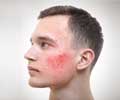US teenagers are increasingly using sunless tanning products that could also be actively promoted to help women avoid sunburn and other harmful effects, according to two reports.

In one article, Vilma E. Cokkinides, Ph.D., of the American Cancer Society, Atlanta, and colleagues assessed the use of sunless tanning products among U.S. adolescents using a nationally representative telephone survey conducted between July and October 2004. A total of 1,600 adolescents age 11 to 18 provided information about whether they used these products in the past year, along with details about demographics, skin type, attitudes and perceptions of sunless tanning and other sun-related behaviors.
Of the teens surveyed, 10.8 percent reported using sunless tanning products in the past year. Those who used them tended to be older and female, to perceive a tanned appearance as desirable, to have a parent or caregiver who also used these products and to hold positive beliefs or attitudes about them. In addition, the use of sunless tanning products was associated with indoor tanning bed use and a higher frequency of sunburn.
"Our findings suggest that in adolescents, use of sunless tanning products appears independently correlated with risky UVR exposure behaviors (indoor tanning and having had sunburns in the previous summer) but not with routine use of sunscreen," the authors write. "Adolescents, therefore, must be educated about these products and the importance of avoiding indoor tanning and practicing sun-protective behaviors."
In another article, Sherry L. Pagoto, Ph.D., of the University of Massachusetts Medical School, Worcester, and colleagues recruited 250 women who were sunbathing at a beach to participate in a cancer prevention intervention study. Of these, 125 were assigned to receive information about skin cancer and sunless tanning. In a tent on the beach, trained research assistants provided the women written and verbal application instructions for sunless tanning products and information about the benefits of sunless tanning as compared with the risks of UV exposure. Participants had a UV-filtered photograph taken, which exposes skin damage not visible to the naked eye, and received free samples of sunscreen and sunless tanning products. The other 125, the control group, received free cosmetic samples not related to skin health and told they would be contacted for follow-up.
After two months, participants who had received the intervention reported sunbathing less frequently, having fewer sunburns, and using more protective clothing than those in the control group. After one year, the intervention group still sunbathed less and also used sunless tanning products more frequently than the control group.
Advertisement
Editor's Note: Please see the articles for additional information, including other authors, author contributions and affiliations, financial disclosures, funding and support, etc.
Advertisement
"Tanning for reasons of appearance, such as to look better or healthier, can be immediately satisfied with sunless tanning, but sunless tanning is a single hammer and there are many nails," write June K. Robinson, M.D., of Northwestern University Feinberg School of Medicine, Chicago, and editor of the Archives, and colleagues in an accompanying editorial.
"As physicians proffer sunless tanning as a substitute for intentional UVL-based tanning, it is important for them to know why and how often their patients tan. For example, an event tanner may believe that the expense of spray-on tanning is a good investment for a single event (e.g., the prom) whereas regular seasonal tanners, those who tan year-round, and those who often use tanning to improve their mood and relieve stress may be less likely to cease UVL exposure. Thus, these regular tanners may be more likely to simply add sunless tanning to existing UVL-based tanning habits."
"Because regular tanners appear to tan for reasons of appearance and mood, it is still possible that sunless tanning may help the regular tanner decrease the number of indoor tanning sessions in a month, thus achieving harm reduction when cessation of tanning is not feasible," they write. "Finding suitable stress-relieving and mood-enhancing alternatives to complement sunless tanning and substitute for UVL-based tanning would be important for these habitual tanners."
Source-Eurekalert








